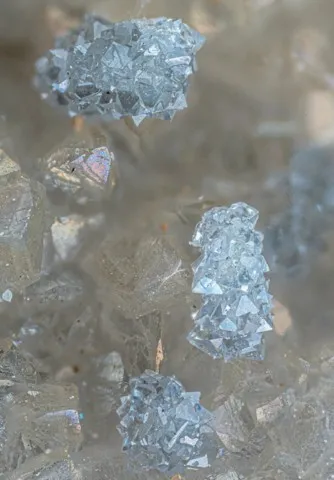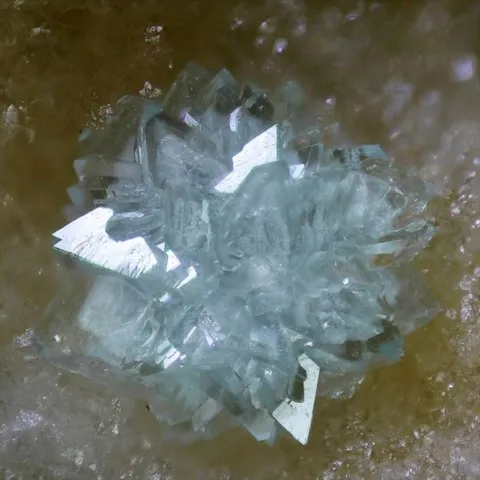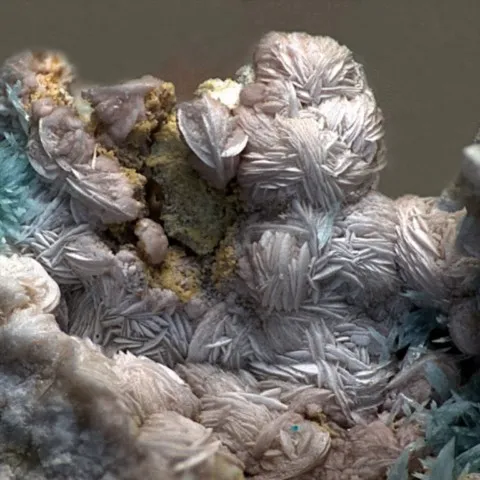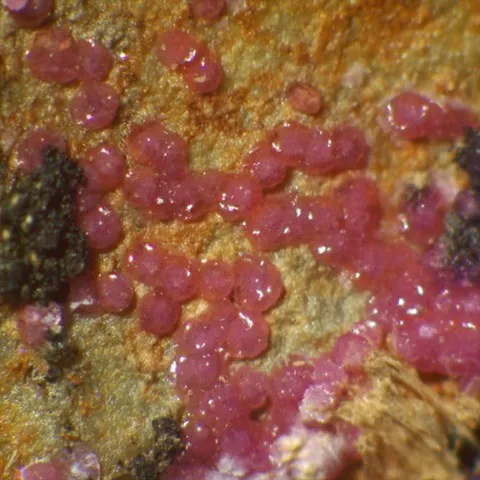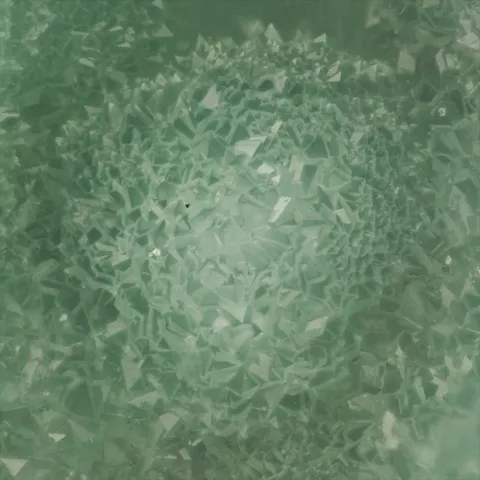MANSFIELDITE
Class : Phosphates, arsenates, vanadates
Subclass : Hydrated arsenates
Crystal system : Orthorhombic
Chemistry : AlAsO4 2H2O
Rarity : Rare to uncommon
Mansfieldite is an hydrated aluminum arsenate that forms a series with scorodite, a mineral with which it is frequently associated. Mansfieldite is a secondary mineral which appears to form by alteration of aluminous rocks mineralized with arsenic. It was named in honor of George Rogers Mansfield, a geologist with the US Geological Survey. Mansfieldite forms very small pseudo-octahedral crystals (2 mm at most) and usually occurs in fibrous spherolitic encrustations, up to 20 cm in diameter, and in porous cellular masses, also spherolitic, white to pale yellow-grey, sometimes bluish green or pink.
Main photo : Mansfieldite from Guanaco Mine, Taltal, Chile © Gianfranco Ciccolini
Mansfieldite in the World
Twinning
No twins known for this mineral species.
Fakes and treatments
No fakes recorded for this mineral species.
Hardness : 3.5 to 4
Density : 3.03
Fracture : Sub-conchoidal
Streak : White
TP : Translucent to transparent
RI : 1.622 to 1.663
Birefringence : 0.020 to 0.032
Optical character : Biaxial +
Pleochroism : None
Fluorescence : None
Solubility : Acids
Magnetism : NoneRadioactivity : None

